Mad Hedge Biotech & Healthcare Letter
July 20, 2021
Fiat Lux
FEATURED TRADE:
(A SNAPSHOT ON HOW TO LIVE A BETTER LIFE)
(DXCM), (CVS), (WBA), (RAD), (MDT), (ABBT), (SENS),
(TDOC), (AMWL), (AMZN), (AAPL), (GOOGL), (GRMN)
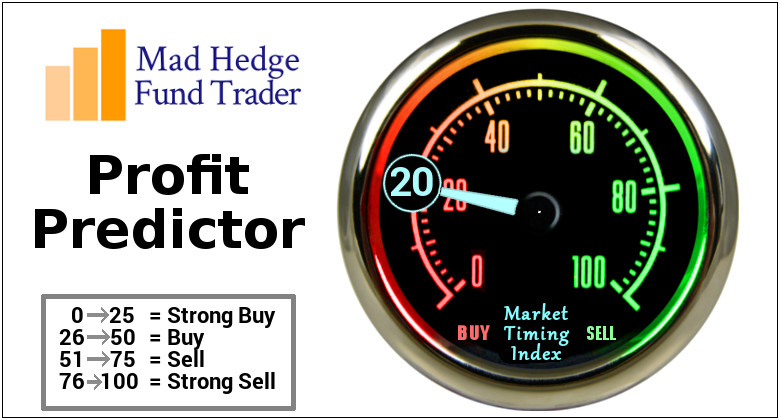
Mad Hedge Biotech & Healthcare Letter
July 20, 2021
Fiat Lux
FEATURED TRADE:
(A SNAPSHOT ON HOW TO LIVE A BETTER LIFE)
(DXCM), (CVS), (WBA), (RAD), (MDT), (ABBT), (SENS),
(TDOC), (AMWL), (AMZN), (AAPL), (GOOGL), (GRMN)

The routine medical check-ups we have today are primarily based on physical exams that were developed way back in the 1820s, utilizing tools that haven’t been upgraded for over a century.
More alarmingly, all we go through is a “comprehensive” health check once every year, offering us just a snapshot of what’s truly going on in our bodies.
If anything, we monitor the releases of new software for our phones and laptops more than we pay attention to our own bodies.
As we’ve proven with the COVID-19 pandemic, so much can happen in a year
Truth be told, our bodies can deteriorate at lightning speed and without any warning. That’s why it’s terrifying to think that we’re not doing as much to monitor our health.
So, what can we do to change this? How can we be more proactive when it comes to our health?
The COVID-19 pandemic has brought many changes into our lives, and this is one of the biggest transformations it has done: an exponential spike in demand for telehealth services.
One of the major issues between patients and doctors at the height of the pandemic was how to go through the physical exams without actual physical contact.
Clearly, it’s not possible to hear a heart murmur or irregular breathing over a video call.
This is where a lot of innovative companies come in.
For a more specialized exam, HD Medical released a credit card-sized device called HealthyU.
Patients simply touch it with their finger, and the device can instantaneously measure their heart rate and sounds, temperature, and even oxygen saturation.
All these data would then be sent to their doctors or health providers in real-time.
HealthyU also has a remote EKG, which effectively allows it to serve as a portable roadmap to a patient’s heart health and helps doctors monitor for signs of heart attacks and arrhythmias.
For example, there’s this handheld exam kit called Tyto that patients can use to perform their own guided medical exams.
This palm-sized gadget is linked to an app, so your doctor can monitor you remotely.
Patients suffering from a sore throat can use Tyto’s camera to let the doctors see the back of their throats, while those struggling from chest pains can easily use the stethoscope to help their physicians listen to their lungs and hearts.
And these are just for physical exams. There are more advancements in health monitoring, and this is where wearable technology comes in.
Wearable technology is considered one of the most promising growth drivers, largely due to the health sector.
The market size for this segment is estimated to rise from $116.2 billion in 2021 to $265.4 billion by 2026, showing off an 18% CAGR growth within a 5-year period.
Applications for wearables have expanded to areas including medical surgery as well as internables and implantables or sensors, which can be fitted into our bodies to help doctors observe various health parameters.
It’s no wonder brands like Apple (AAPL) with Apple Watch, Google (GOOGL) with Fitbit, and Garmin (GRMN) have been working overtime to try to cover as much of the wearable health market as possible.
So far, these products provide extensive data ranging from calories burned to our heart rates.
Aside from them, there are other wearables in the market today that could change the landscape of the health industry.
One of them is the Oura Ring, which was first introduced in 2013.
Designed to be worn 24 hours a day, this device measures the bodily functions of the user. It gathers data through infrared light sensors that touch the finger arteries.
One of the most impressive things it can do is monitor your sleep movements to help determine early onset of some neurodegenerative diseases like Parkinson’s.
The information is all sent to the app, which users can access via their smartphones. The Oura Ring is somewhere between $299 and $999, depending on your preferences in style and color.
Although it’s yet to be a mainstream product, the Oura Ring was provided to NBA players when they resumed their season amid the COVID-19 pandemic.
The device was used to help the basketball stars monitor their health.
In fact, a joint study with the University of California San Francisco showed that the Oura Ring was able to help detect the common symptoms of COVID-19 three days earlier and with as high as 90% accuracy.
Another impressive health monitoring advancement covers the glucose monitoring product line of Dexcom (DXCM).
The primary goal of Dexcom is to take away the guesswork that comes with finger pricking.
By offering a wearable sensor, people with diabetes can easily and accurately monitor their glucose levels.
What’s even more convenient is that Dexcom’s wearable is available in practically all large pharmacies like CVS (CVS), Walgreens (WBA), and Rite Aid (RAD).
To date, Dexcom’s biggest competitors include Medtronic’s (MDT) Guardian Connect, Abbott’s (ABBT) Freestyle Libre, and Senseonics’ (SENS) Eversense.
These are only some of the emerging technologies that could help us improve the quality of our lives today, with thousands more expected to follow suit in the years to come.
For an endlessly advancing world with smartphones, supercomputers, smart homes, and even self-driving cars receiving software updates virtually every week, it’s absurd to think that we only allot a single check-in on our health annually.
But with the advent of these technologies and the increasing popularity of telehealth services spearheaded by the likes of Teladoc (TDOC), Amwell (AMWL), and even Amazon (AMZN), it looks like we’re starting to finally pay more attention to our health.
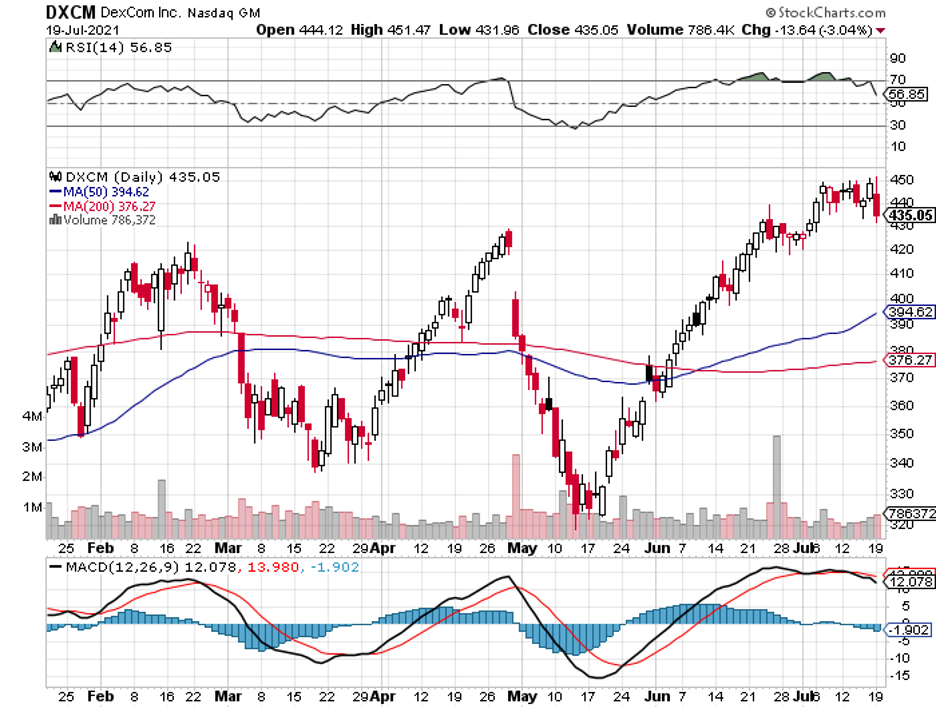

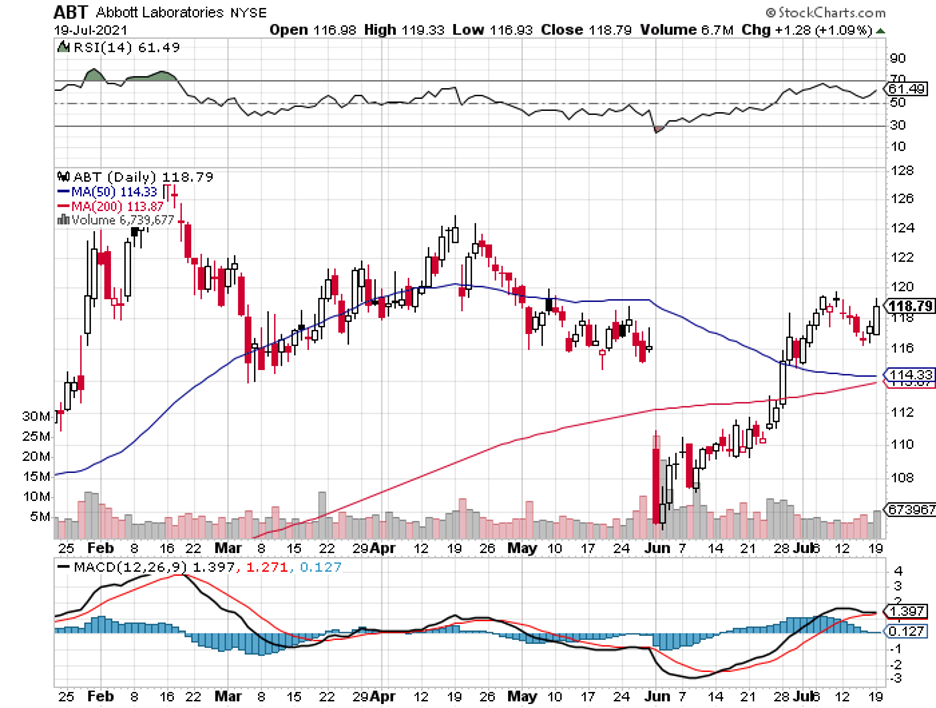
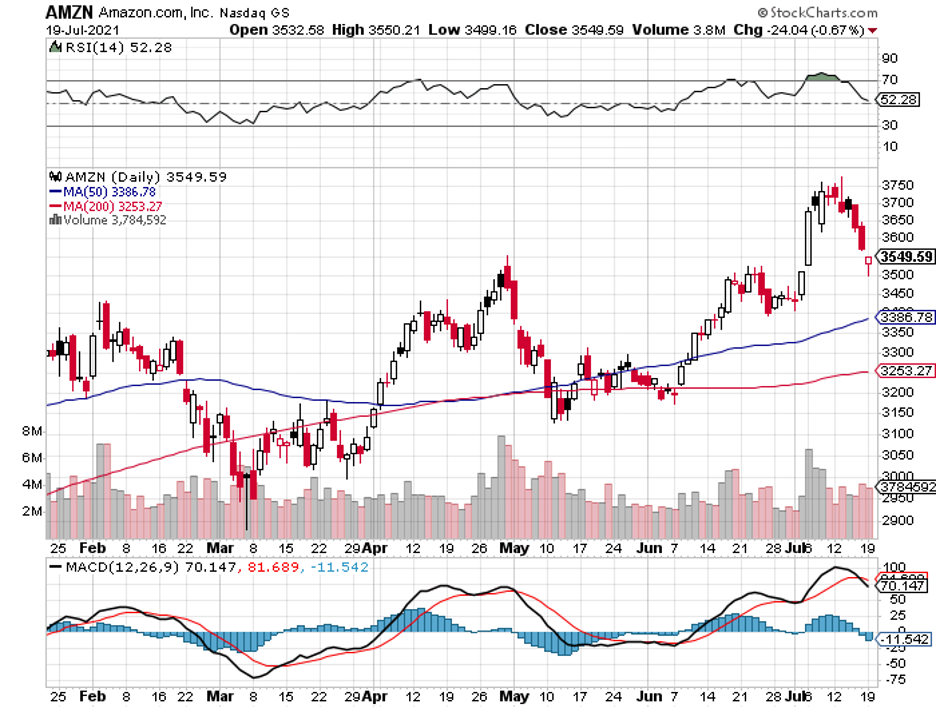
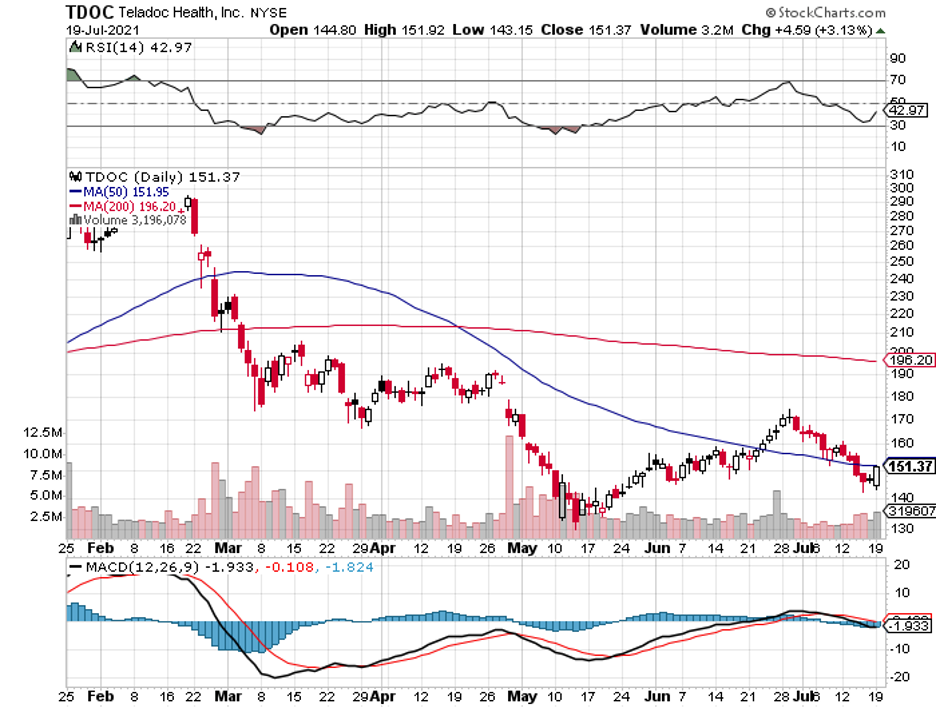
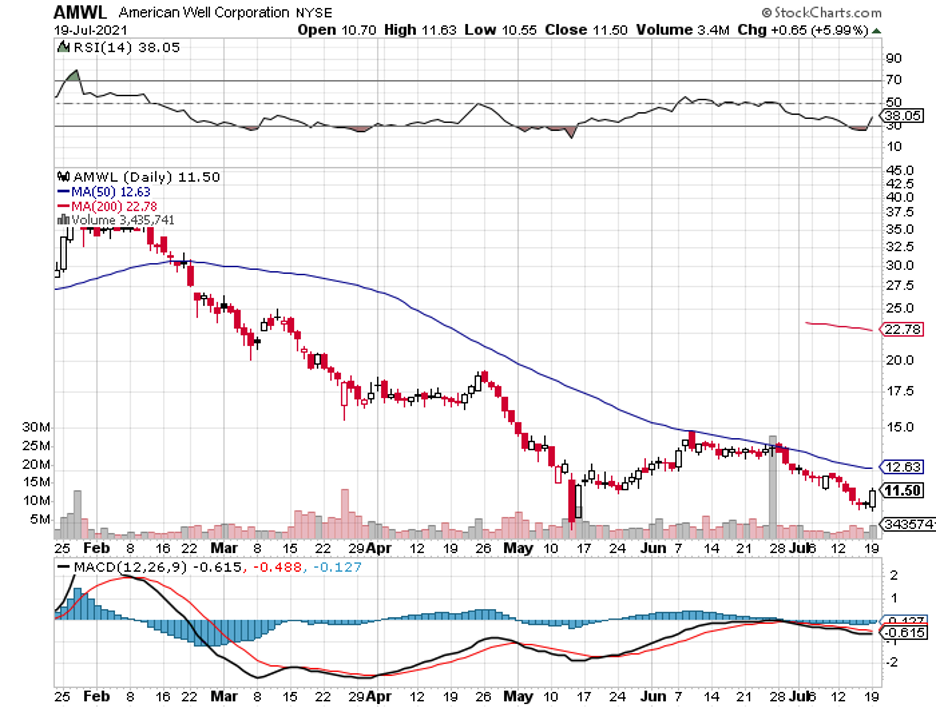
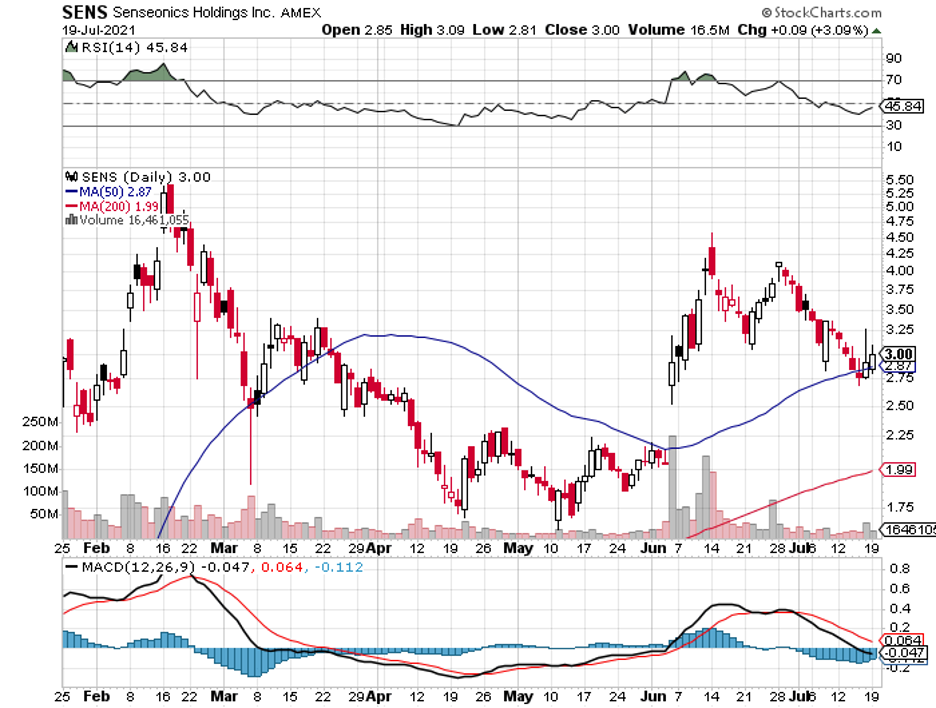
Global Market Comments
July 2, 2018
Fiat Lux
Featured Trade:
(THE MARKET OUTLOOK FOR THE WEEK AHEAD, OR THE FUTURE IS HAPPENING FAST),
(HOG), (TLT), (ROM), (MU), (NVDA), (LRCX),
(SPY), (AMZN), (NFLX), (EEM), (UUP), (WBA),
(THE WORST TRADE IN HISTORY), (AAPL)
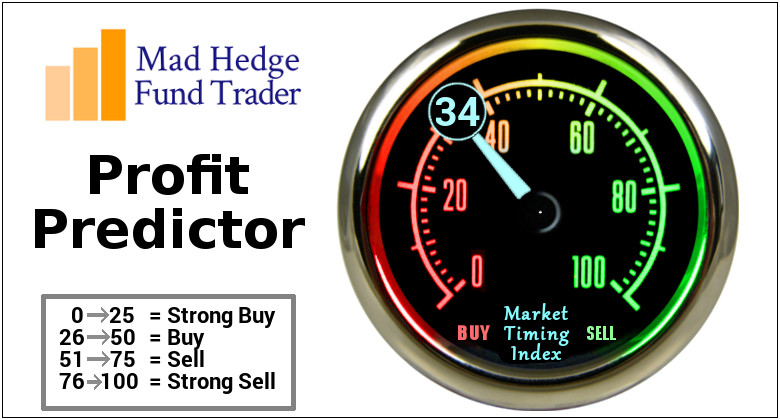
I feel like I'm living life in fast forward these days.
First we got a slap across the face with a wet mackerel on Monday with a 328 plunge in the Dow Average on yet another trade war escalation.
Harley Davidson (HOG) said it was moving a factory out of the country to bypass new European duties imposed in response to ours. If Harley is doing this you can bet there are 10,000 other companies thinking about it.
And even though robust economic growth should assure us that we remain in a new bear market for bonds, traders think otherwise. A 10-year Treasury bond (TLT) yield at 2.81% says that we're already in the next recession, we just don't know it yet.
As always happens with the ebb and flow of the trade war, technology got hammered. My favorite early retirement vehicle, the ProShares Ultra Technology 2X ETF (ROM), plunged some 11.19% to an even $100. Chip stocks such as Micron Technology (MU) and Lam Research (LRCX) get particularly hurt as China buys 80% of their processors from the U.S.
In the meantime, Tesla (TSLA) continues its phoenixlike rise from the ashes yet again, burning the shorts for the umpteenth time. The shares are now taking another run at a new all-time high. You would think people would learn but they don't. Einstein's definition of insanity is repeating the same thing over and over again and expecting a different result.
While bearish analysts predicted the imminent demise of the company, I saw a steady stream of trucks delivering new Tesla 3s from the Fremont factory while driving back from Los Angeles last weekend. Nothing beats on-the-ground research.
I'm sorry, but there is definite disconnect from reality with this company. The most hated company in America has produced the fifth best performing stock in over the past eight years, up more than 2,000%. I guess that's what happens when you disrupt big oil, Detroit, the U.S. dealer network, and the entire advertising industry all at the same time.
Interestingly, we caught three of the five best performers early on, including Tesla, NVIDIA (NVDA), and Netflix (NFLX).
Emerging markets (EEM) continue their death spiral, pummeled by the twin threats of trade wars and a soaring dollar (UUP). Most big emerging companies have their debt in dollars.
Sometimes you have to forget what you know to make money, and that has certainly been the case for me with emerging countries, where I spent a large part of my life.
The future is happening fast. Amazon (AMZN) single-handedly demolished the drug sector when it announced its takeover of online pharmacy company PillPack. The traditional brick-and-mortar retail pharmacy sector lost $9 billion in market capitalization just on the announcement. Walgreens (WBA) alone dropped a gut churning 10%.
If anyone can slash America's bloated health care bill it is Jeff Bezos. Just ask any former bookseller or toy maker.
And for a final middle finger salute to investors, the president said he wants to withdraw from the World Trade Organization, which the U.S. itself created after WWII. That means the United Nations is next on the chopping block.
America is rapidly becoming rogue nation No. 1, the next failed state. And failed states don't have great stock markets. Just check out the Somalia Stock Exchange.
They net of all of this is that the rest of the global economy is rolling over like the Bismarck, while the U.S. remains a sole beacon of strength. That's not good when half of S&P 500 earnings come from abroad.
However, that strength is based on a temporary one-time-only stimulus from massive deficit spending and corporate tax cuts that runs out of juice next year.
So keep tap dancing on the edge of the Grand Canyon. We'll miss you when you're gone. And before you ask, the best hedge in this kind of market is cash, which has huge option value that almost no one recognizes.
Despite all the chaos, uncertainty, and massive headline risk, I managed to tiptoe between the raindrops, keeping the Mad Hedge Fund Trader Alert Service performance just short of a new all-time high.
I closed out the month of June at a healthy 4.45%, my 2018 year-to-date performance rose to 24.82% and my 8 1/2-year return catapulted to 301.29%. The Averaged Annualized Return stands at 35.10%. The more narrowly focused Mad Hedge Technology Fund Trade Alert performance is annualizing now at an impressive 38.69%.
This coming holiday shortened week will be all about the jobs, jobs, jobs. Also, the Fed will raise interest rates by 25 basis points on Wednesday to an overnight rate of 2.00%.
On Monday, July 2, at 9:45 AM, the May PMI Manufacturing Index is out.
On Tuesday, July 3, at 10:00 AM, the May Factory Orders are published.
On Wednesday, July 4, U.S. markets are closed for Independence Day. I will be watching the fireworks display over New York's Hudson River from the top of a Midtown Manhattan skyscraper.
Thursday, July 5, sees a huge bunching up of data thanks to the Fourth of July. It leads with the ADP Employment Report for private sector jobs at 8:15 AM EST. The Weekly Jobless Claims follow at 8:30 AM EST, which saw a rise of 9,000 last week to 227,000. Also announced is the all-important 25 basis point interest rate rise from the Federal Reserve and the FOMC Minutes at 2:00 PM, a reading of what was discussed at the last Fed meeting.
On Friday, July 6 at 8:30 AM EST, we get the June Nonfarm Payroll Report. Then the Baker Hughes Rig Count is announced at 1:00 PM EST. I will be sipping a glass of champagne as I board the Queen Mary 2 at the Brooklyn Cruise Terminal. I look forward to all those who signed up for my Seminar at Sea.
As for me, I will be hurriedly packing for the 2018 Mad Hedge European Tour.
Unfortunately, traveling in the grand style of the 19th century Belle Epoque involves bringing 200 pounds of luggage.
Now where are those darn black dress socks? And why am I missing a stud for my formal shirt?
Good Luck and Good Trading.








Time to Get Off the Merry-Go-Round
Legal Disclaimer
There is a very high degree of risk involved in trading. Past results are not indicative of future returns. MadHedgeFundTrader.com and all individuals affiliated with this site assume no responsibilities for your trading and investment results. The indicators, strategies, columns, articles and all other features are for educational purposes only and should not be construed as investment advice. Information for futures trading observations are obtained from sources believed to be reliable, but we do not warrant its completeness or accuracy, or warrant any results from the use of the information. Your use of the trading observations is entirely at your own risk and it is your sole responsibility to evaluate the accuracy, completeness and usefulness of the information. You must assess the risk of any trade with your broker and make your own independent decisions regarding any securities mentioned herein. Affiliates of MadHedgeFundTrader.com may have a position or effect transactions in the securities described herein (or options thereon) and/or otherwise employ trading strategies that may be consistent or inconsistent with the provided strategies.
This site uses cookies. By continuing to browse the site, you are agreeing to our use of cookies.
OKLearn moreWe may request cookies to be set on your device. We use cookies to let us know when you visit our websites, how you interact with us, to enrich your user experience, and to customize your relationship with our website.
Click on the different category headings to find out more. You can also change some of your preferences. Note that blocking some types of cookies may impact your experience on our websites and the services we are able to offer.
These cookies are strictly necessary to provide you with services available through our website and to use some of its features.
Because these cookies are strictly necessary to deliver the website, refuseing them will have impact how our site functions. You always can block or delete cookies by changing your browser settings and force blocking all cookies on this website. But this will always prompt you to accept/refuse cookies when revisiting our site.
We fully respect if you want to refuse cookies but to avoid asking you again and again kindly allow us to store a cookie for that. You are free to opt out any time or opt in for other cookies to get a better experience. If you refuse cookies we will remove all set cookies in our domain.
We provide you with a list of stored cookies on your computer in our domain so you can check what we stored. Due to security reasons we are not able to show or modify cookies from other domains. You can check these in your browser security settings.
These cookies collect information that is used either in aggregate form to help us understand how our website is being used or how effective our marketing campaigns are, or to help us customize our website and application for you in order to enhance your experience.
If you do not want that we track your visist to our site you can disable tracking in your browser here:
We also use different external services like Google Webfonts, Google Maps, and external Video providers. Since these providers may collect personal data like your IP address we allow you to block them here. Please be aware that this might heavily reduce the functionality and appearance of our site. Changes will take effect once you reload the page.
Google Webfont Settings:
Google Map Settings:
Vimeo and Youtube video embeds:
